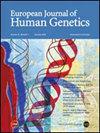新型HSPB8突变在严重早发性肌病中累及呼吸和心肌,在细胞模型中引起蛋白酶抑制缺陷。
IF 4.6
2区 生物学
Q2 BIOCHEMISTRY & MOLECULAR BIOLOGY
引用次数: 0
摘要
热休克蛋白家族B(小)成员8 (HSPB8)促进伴侣辅助选择性自噬(CASA),从而确保肌肉和神经元的蛋白质稳态。在神经肌病中发现的HSPB8移码突变在同一框架上翻译,产生相同的c端延伸,这导致HSPB8聚集和蛋白静止缺陷。在这里,我们描述了三种新的HSPB8移码变体,使用第三种替代框架翻译成蛋白质,以阻止规范框架和其他已知HSPB8移码突变体使用的下游密码子。因此,预测这些变异编码长度和氨基酸不同的c端延伸。HSPB8 c.562delC和c.520_523delTACT在两例不相关的散发患者中被发现,而c.515delC在一例家族性早发性肌病病例中被发现。患者可能表现出不同的病理特征,如神经病变、呼吸功能不全,以及严重的心肌病。骨骼肌活检显示纤维大小、萎缩、多个空泡、脂肪浸润和嗜酸性包裹体的变化。在重建的疾病细胞模型中,一种具有代表性的新型HSPB8突变体的表达导致i) HSPB8突变体聚集,ii) HSPB8野生型和CASA复合物成员的隔离,以及iii)自噬受体封存体-1 (SQSTM1/p62), iv)泛素化底物的积累,以及v) CASA介导的降解缺陷。我们的研究结果证明,HSPB8基因的最后一个外显子对致病性突变高度敏感,导致与HSPB8移码变异相关的更广泛的表型谱。我们的研究表明,HSPB8基因检测不仅对神经病变和肌病,而且对心肌病也很重要。本文章由计算机程序翻译,如有差异,请以英文原文为准。

Novel HSPB8 mutations in severe early-onset myopathy with involvement of respiratory and cardiac muscles cause proteostasis defects in cell models
Heat shock protein family B (small) member 8 (HSPB8) promotes chaperone-assisted selective autophagy (CASA), which assures proteostasis in muscles and neurons. HSPB8 frameshift mutations found in neuromyopathies are translated on the same frame, generating the same C-terminal extension, which causes HSPB8 aggregation and proteostasis defects. Here, we describe three novel HSPB8 frameshift variants, translated to protein using the third alternative frame to stop codons downstream to the canonical one and to the one used by other known HSPB8 frameshift mutants. Therefore, these variants are predicted to encode a C-terminal extension that is different in length and amino acids. HSPB8 c.562delC and c.520_523delTACT were identified in two unrelated sporadic patients, while c.515delC, in a familial case of early-onset myopathy. Patients may differentially exhibit additional pathological features, such as neuropathy, respiratory insufficiency, and, remarkably, severe cardiomyopathy. Skeletal muscle biopsies revealed variations in fiber size, atrophy, multiple vacuoles, fat infiltration, and eosinophilic inclusions. In a reconstituted cell model of disease the expression of one representative novel HSPB8 mutant results in i) aggregation of the HSPB8 mutant, ii) sequestration of both the HSPB8 wild-type and CASA complex members, as well as iii) the autophagy receptor sequestosome-1 (SQSTM1/p62), iv) accumulation of ubiquitinated substrates, and v) defects in CASA-mediated degradation. Our results prove that the last exon of the HSPB8 gene is highly susceptible to pathogenic mutations, resulting in a wider phenotypic spectrum associated with HSPB8 frameshift variants. Our studies suggest the importance of HSPB8 genetic testing not only for neuropathy and myopathy but also for cardiomyopathy.
求助全文
通过发布文献求助,成功后即可免费获取论文全文。
去求助
来源期刊

European Journal of Human Genetics
生物-生化与分子生物学
CiteScore
9.90
自引率
5.80%
发文量
216
审稿时长
2 months
期刊介绍:
The European Journal of Human Genetics is the official journal of the European Society of Human Genetics, publishing high-quality, original research papers, short reports and reviews in the rapidly expanding field of human genetics and genomics. It covers molecular, clinical and cytogenetics, interfacing between advanced biomedical research and the clinician, and bridging the great diversity of facilities, resources and viewpoints in the genetics community.
Key areas include:
-Monogenic and multifactorial disorders
-Development and malformation
-Hereditary cancer
-Medical Genomics
-Gene mapping and functional studies
-Genotype-phenotype correlations
-Genetic variation and genome diversity
-Statistical and computational genetics
-Bioinformatics
-Advances in diagnostics
-Therapy and prevention
-Animal models
-Genetic services
-Community genetics
 求助内容:
求助内容: 应助结果提醒方式:
应助结果提醒方式:


